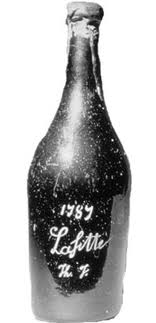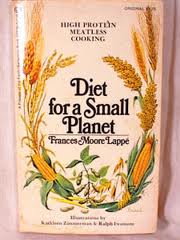FTC Cracks Down On “Greenwashing”
By admin on December 24, 2013
 Law 360 reported recently that that the FTC is taking decisive action against companies that make deceptive environmental marketing claims. “Greenwashing” involves misleading consumers concerning the environmental benefits of a product or service. In an earlier article, we discussed the “Six Sins of Greenwashing.”
Law 360 reported recently that that the FTC is taking decisive action against companies that make deceptive environmental marketing claims. “Greenwashing” involves misleading consumers concerning the environmental benefits of a product or service. In an earlier article, we discussed the “Six Sins of Greenwashing.”
If you do not have the time or inclination to review the FTC’s newly revised (October 2012) Guides for the Use of Environmental Marketing Claims (the “Green Guides”), a review of the “Six Sins of Greenwashing” will tell you almost all you need to know to stay out of trouble with the FTC.
 To test your “Greenwashing” prowess, you can go on the UL site called the “Sins of Greenwashing:
To test your “Greenwashing” prowess, you can go on the UL site called the “Sins of Greenwashing: Home and Family Edition” and play “Name that Sin“, which is thought provoking and challening.
Home and Family Edition” and play “Name that Sin“, which is thought provoking and challening.
Recent FTC enforcement actions fall under the “sin of fibbing” or, if you take a more charitable view of the manufacturers’ alleged actions, the lesser “sin of no proof.” Committing either sin, however, lands you in FTC purgatory. In November 2013, FTC announced settlements with three mattress companies that were marketing products as having no volatile organic compounds (“VOCs”) or chemicals.
The mattress companies distributed advertising claiming that the products were VOC-free and chemical-free. The only problem with these claims was that they did not comply with the Green Guides which specifically address “free of” and “non-toxic” claims. The Green Guides set forth what steps a company must take to make such an environmentally friendly claim without running ![]() afoul of the regulations.
afoul of the regulations.
In the case of one mattress manufacturer, EcoBaby, the FTC claimed that the company’s use of an environmental certification was false and misleading. Remarkably, over four hundred eco-labels and green certifications are used globally. The revised Green Guides advise industry that it is deceptive to represent that a product has been endorsed or certified by an independent third-party, or to give that impression, when that is not the case.
EcoBaby’s promotional materials included a seal of approval from the National Association of Organic Mattress Industry (“NAOMI”). According to the FTC’s complaint, however, NAOMI is simply an alter ego of EcoBaby, which awards seals to its own products. Thus, NAOMI is not an independent third-party, although a consumer might reasonably believe it is. Who has the time to research whether an environmental certification is legitimate or not? The Pure Rest Organics site, which advertises (among others) Ecobaby products, boast no less than twelves environmental certifications on its website.
Organic Mattress Industry (“NAOMI”). According to the FTC’s complaint, however, NAOMI is simply an alter ego of EcoBaby, which awards seals to its own products. Thus, NAOMI is not an independent third-party, although a consumer might reasonably believe it is. Who has the time to research whether an environmental certification is legitimate or not? The Pure Rest Organics site, which advertises (among others) Ecobaby products, boast no less than twelves environmental certifications on its website.
In October 2013, FTC announced six enforcement actions addressing marketing claims that certain plastic products or additives were biodegradable. The Green Guides establish what is required to make a “biodegradable” advertising claim. Reviewing the FTC’s complaints, it is fairly clear that the companies involved either didn’t read the Green Guides or chose to ignore them.
 Commensurate with the increase in FTC enforcement claims may be claims by companies against their own suppliers. A manufacturer who advertises to consumers should exercise reasonable caution before relying on its supplier’s representations concerning the environmental attributes of ingredients that they incorporate in their products. The Green Guides apply not only to the environmental attributes of a product, but to the environmental attributes of packaging as well as service provided in connection with marketing as well.
Commensurate with the increase in FTC enforcement claims may be claims by companies against their own suppliers. A manufacturer who advertises to consumers should exercise reasonable caution before relying on its supplier’s representations concerning the environmental attributes of ingredients that they incorporate in their products. The Green Guides apply not only to the environmental attributes of a product, but to the environmental attributes of packaging as well as service provided in connection with marketing as well.
From a corporate perspective, in-house counsel should review environmental marketing claims to avoid running afoul of FTC regulators. An important first step in that due diligence process is to ensure that “good science” supports environmental advertising claims.

 GBL § 350 to allege false advertising. Typically, these two sections are pled in tandem, both in single plaintiff cases and in class action litigation seeking relief from consumer fraud.
GBL § 350 to allege false advertising. Typically, these two sections are pled in tandem, both in single plaintiff cases and in class action litigation seeking relief from consumer fraud.  cite a long series of prior appellate cases, which had established reliance as a basis for obtaining a recovery under GBL § 350, which clearly is no longer good law. In the past, New York courts were reluctant to certify GBL § 350 claims because they found that reliance was not subject to class wide proof.
cite a long series of prior appellate cases, which had established reliance as a basis for obtaining a recovery under GBL § 350, which clearly is no longer good law. In the past, New York courts were reluctant to certify GBL § 350 claims because they found that reliance was not subject to class wide proof.  adversely affected if the e-consumer was not able to trust the e-seller?
adversely affected if the e-consumer was not able to trust the e-seller? The publication of “
The publication of “ just go back to the way we farmed in the 19th century? From a societal standpoint, what are the pros and cons of organic food vs. “genetically modified” food? How can we differentiate between the myths about the food we eat and the facts? In an
just go back to the way we farmed in the 19th century? From a societal standpoint, what are the pros and cons of organic food vs. “genetically modified” food? How can we differentiate between the myths about the food we eat and the facts? In an  Environmental Stewardship Today’s farmers use agricultural practices that improve the sustainability of the land and limits the use of herbicides, pesticides and fertilizers. The goal of the much of the research into genetically engineered crops is higher yield with less water and chemical use.
Environmental Stewardship Today’s farmers use agricultural practices that improve the sustainability of the land and limits the use of herbicides, pesticides and fertilizers. The goal of the much of the research into genetically engineered crops is higher yield with less water and chemical use. What is the duty of a real estate developer to disclose to prospective residential purchasers information about the neighborhood that may adversely impact property values? Apparently none if the developer is not in privity with the homeowners, according to the Eleventh Circuit.
What is the duty of a real estate developer to disclose to prospective residential purchasers information about the neighborhood that may adversely impact property values? Apparently none if the developer is not in privity with the homeowners, according to the Eleventh Circuit. On October 6, 2010, the
On October 6, 2010, the